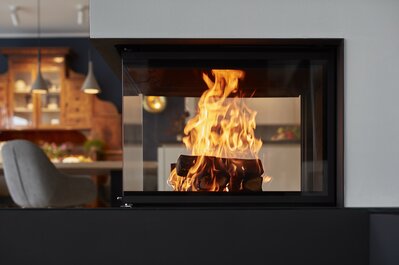The best known type of corrosion is oxidation of steel or iron and this type is commonly known by the term rusting. One distinguishes different corrosion resistance classifications. The corrosion class or classification indicates to what extent a steel is resistant to corrosion under certain conditions. For chimneys, one often sees:
V1: Lowest corrosion resistance. These products are suitable for less aggressive environments, for example indoors, in places with a temperate climate and without exposure to aggressive substances or high humidity. This is common in systems powered by gas or oil and with well-tuned combustion. The system should be able to withstand lower temperatures and less aggressive gases.
V2: Medium corrosion resistance. The V2 rating is the current standard and a requirement for a modern chimney system installed outdoors (double-wall insulated). V2 is typical for flue systems used in wood combustion or biomass boilers, where combustion can produce more condensate but conditions are not extremely aggressive. These products are suitable for environments that thus exhibit more corrosive conditions than V1, such as moderate industrial environments or outdoor use in climates with some humidity or contamination.
V3: High corrosion resistance. These products are designed to perform in more aggressive environments, such as in harsh industrial environments, coastal areas with salt spray, or in areas with high humidity or strong air pollution. V3 provides assurance when systems must operate under conditions where there are lots of condensate is produced or when combustion is not optimal, as often occurs with wood or biomass combustion appliances. External factors such as wind, draft and other environmental conditions always play a role in the degree of combustion, and thus the degree of combustion is not determined solely by the combustion appliance itself!


